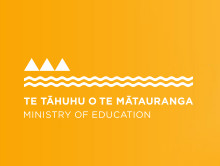He Taiwhenua Pūmau - Te Noho i te Taiwhenua o Yurok, i Karapōnia ki te Raki (wh. 27–32)
nā Reweti Wiki, nā Kania Worsley i whakamāori
He whakarāpopototanga
E kōrero ana tēnei tuhinga mō Reweti me tōna whānau e noho ana i Rek-woi, i Karapōnia ki te Raki, me ā rātou kitenga i ngā āhuatanga o ngā iwi taketake i reira me te whakapapa.
Summary
This story is about the life of Reweti and his family in Rek-woi, in North California. He discusses the indigenous American Indians, and talks about the importance of genealogy.
| Te momo reo tuhi Language style |
|
|---|---|
| Ētahi āhuatanga o tēnei momo reo tuhi Features of this language style |
|
I te Ākonga e Pānui ana i te Pukapuka
During Reading
1. Wānangahia ngā kupu i raro iho, ka whakamahi i ngā kupu i roto i tētahi tuhinga.
Discuss the words below and use as many as possible within a story; remember to use the structure from within the text as an example.
| te kupu Māori | te kupu Yurok |
|---|---|
| Te iwi o te awa | Pu-lik-la |
| Kia ora | Aiy-yu-kwee |
| Ko Reweti tōku ingoa | Nek-now Reweti |
| Nō Aotearoa ahau | Aotearoa me-wa me-chok |
| Kei Rek-woi ahau e noho ana | Rek-woi ok |
2. Kōwhiria tētahi tangata nō tāwāhi ka tuhituhi kōrero mōna.
Choose a person from another country and write about that person’s life.
3. Tonoa ngā ākonga kia tirohia te pikitia kei te whārangi 30. Tonoa rātou kia tuhi i tētahi kupumahi, tētahi kupu āhua, me tētahi kupu ingoa kua toko ake i ō rātou whakaaro i te tirohanga tuatahi ki te pikitia. Mā ēnei kupu ka titoa e rātou tētahi rerenga kōrero kia tekau-mā-rima, iti ake rānei, ngā kupu. Mā te ākonga tāna ake tuhinga e pānui ki tētahi hoa me te whakamārama atu i te take i kōwhiria ai e ia aua kupu.
Ask students to look at the picture on page 30. Direct them to write one verb, one adjective, and one noun from their immediate reaction on seeing the image. Using these words they then write a sentence relating to the picture of no more than fifteen words. Get the students to read their sentence to another person and explain why they selected their words.
4. Mā ngā ākonga e rangahau tētahi o ngā iwi taketake o te ao. Mā ia ākonga e tuhi he kōrero mō tērā iwi. Kohia ngā kōrero, kātahi ka waihanga i tētahi whakaaturanga ā-rorohiko, i tētahi pukapuka rānei hei taonga mō te whare pukapuka o te kura.
Ask students to go and research an indigenous people from somewhere else in the world. Create a profile on that culture. Collate all findings and create a computerised presentation or a book for the school library.



